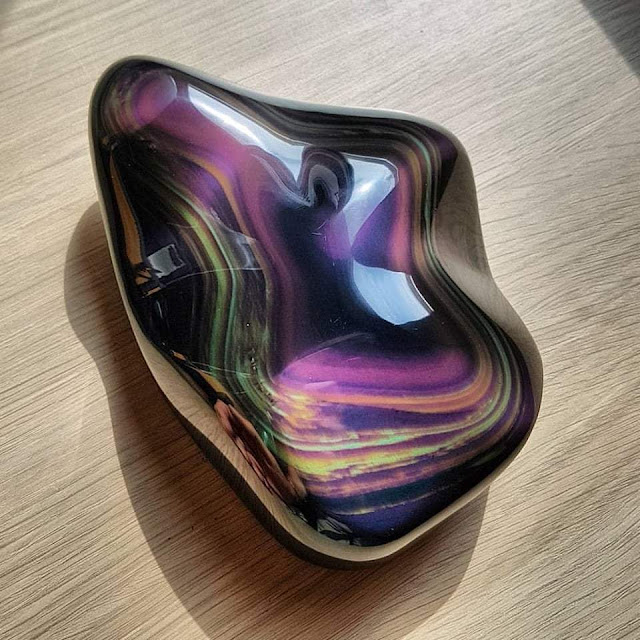
Rainbow Obsidian: Iridescent Obsidian
Rainbow obsidian is a variety of natural volcanic glass known for its iridescent sheen, which displays a spectrum of colors when light reflects off it. This colorful display is primarily due to the diffraction of light caused by nanoscale inclusions or structural features within the glass. These effects become particularly noticeable when the obsidian is cut and polished, enhancing the visibility of its internal light play.
Rainbow obsidian showcases a captivating spectrum of colors, typically including vibrant greens, purples, reds, and golds. The specific colors and their intensity can vary depending on the size and distribution of magnetite inclusions within the stone.
Obsidian is a naturally occurring volcanic glass. It is formed during the eruption of felsic lavas, which are distinguished by having high concentrations of the chemical element silica. Because of their high silica content, felsic lavas do not behave like the mafic, or silica-poor, lavas we see on the island of Hawaii.
The colors displayed in rainbow obsidian are influenced by the size, shape, and arrangement of microscopic or nanoscopic inclusions or structural features within the glass. These factors determine how light is diffracted or interferes with itself, producing iridescence. While the material composition of these inclusions can influence the overall appearance, the specific colors of iridescence are primarily a result of light interaction rather than the direct color of the inclusions themselves.
Rapid Cooling: It all starts with molten lava, typically rich in silica (felsic lava). When this lava encounters a sudden temperature drop, like contact with water or air, it cools down extremely quickly. This rapid cooling prevents the formation of regular crystals, resulting in a glassy rock – obsidian.
Microscopic Inclusions: During this rapid cooling, tiny mineral inclusions, often magnetite nanoparticles, can become trapped within the solidifying obsidian. These inclusions are usually less than 0.01 millimeter in size and often arranged in a specific pattern.
Properties of Rainbow Obsidian
Color: Rainbow obsidian's defining characteristic is its play of color, exhibiting vibrant flashes of red, green, blue, violet, and gold depending on the light and viewing angle. This iridescence is caused by the presence of tiny gas bubbles and mineral inclusions, primarily magnetite, within the obsidian.
Luster: Rainbow obsidian typically has a vitreous luster, meaning it has a glassy, shiny appearance. The iridescence adds a unique, almost metallic quality to its luster.
Transparency: Rainbow obsidian is typically opaque, meaning light cannot pass through it. However, some thinner pieces might exhibit a slight translucency at the edges.
Texture: Rainbow obsidian is typically opaque and smooth to the touch, with a conchoidal fracture when broken, meaning it breaks into sharp, curved fragments.
Hardness: Like all obsidian, rainbow obsidian is a relatively hard stone, ranking 5-6 on the Mohs scale of mineral hardness. This means it can scratch many other materials but can be scratched itself by harder minerals like quartz.
Mineral composition: Rainbow obsidian is not a single mineral but a volcanic glass composed primarily of amorphous silica (SiO₂). However, the presence of gas bubbles and other mineral inclusions, such as magnetite, contribute to its unique properties and play of color.



